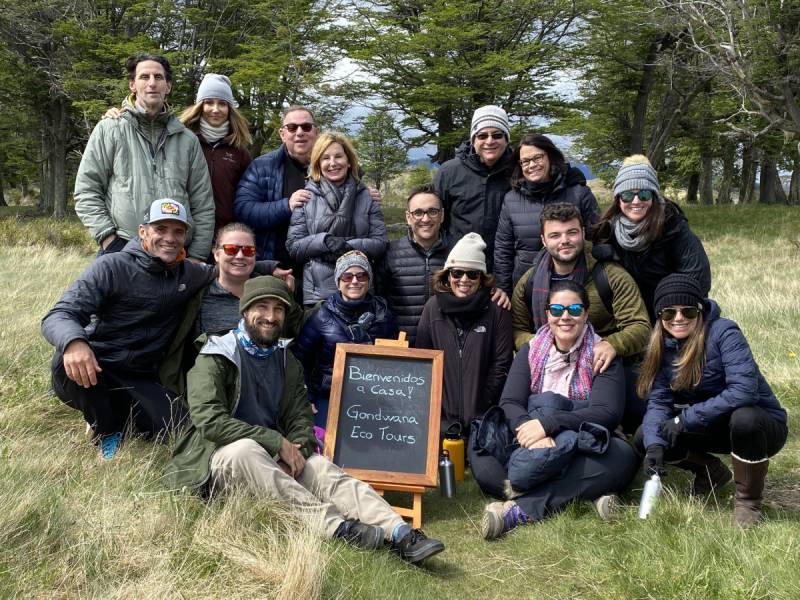Costa Rica and Ecotourism | Traveling the World Responsibly
Download Travel Details >
Discover Costa Rica Conservation with a Sustainable Small Group Tour
Costa Rica is the poster child for ecotourism. This Central American country is home not only to volcanoes, rainforests, and beaches, but also to a continuous stream of 2.7 million tourists each year. Today, Costa Rica and ecotourism go hand-in-hand, with the country’s diverse natural landscapes and extraordinary wildlife drawing visitors from around the globe. This incredible influx of tourists means that Costa Rica conservation efforts are continually evolving to protect the country’s fragile ecosystem for generations to come.
What is Ecotourism?
At its heart, ecotourism is a form of responsible travel to natural areas that conserves the environment, sustains the well-being of the local people, and involves interpretation and education both for staff and guests. For the past several decades, Costa Rica’s ecological tourism has grown exponentially, making it a world leader in conservation efforts. As a result, the country has set aside nearly 28 percent of its land into protected areas, reversing decades of deforestation and conserving unique ecosystems like cloud forests and mangrove swamps.
The Three Core Principles of Costa Rica Ecological Tourism
In Costa Rica, like in other areas where ecotourism is popular, this method of sustainable travel is guided by three core principles: conservation, communities, and education.
- Conservation: In Costa Rica, conservation is the most important component of ecotourism. Conservation offers long-term, sustainable solutions that enhance and protect biodiversity and nature. These solutions are typically financed through tourism dollars, but can also be developed through grassroots conservation efforts.
- Communities: Costa Rica ecotourism has increased employment opportunities for local Ticos. This allows communities to address societal issues like unemployment and poverty, while creating sustainable development and protecting valuable natural resources.
- Education: Costa Rica ecological tourism emphasizes education. While every tourist wants to explore beautiful places, it is also important to learn about the sites you’re visiting! By increasing awareness about environmental issues, responsible tour guides play an important role in the conservation movement.
Costa Rica Conservation and Responsible Travel
Costa Rica and ecotourism both emphasize the importance of nature. In Costa Rica, ecological tourism involves responsible travel to natural areas that conserve the environment, sustain local communities, and encourage education about natural habitats. This form of sustainable tourism focuses on observing and enjoying nature with minimal impact.
Ecotourism activities in Costa Rica include bird watching, wildlife observation, hiking, and exploring parks and other protected areas. Ecotourism also often involves supporting local businesses, hiring local guides, and engaging with local communities through cultural exchanges. Costa Rica conservation is also a key part of ecotourism, with key projects highlighted for tourists to learn more about the country’s efforts to protect its natural heritage and biodiversity. Here are a few examples of Costa Rica conservation projects that have made the country a leader in ecotourism:
|
Conservation Project |
Success Story |
|
Jaguar Conservation |
Programs like the Jaguar Rescue Center focus on rescuing and rehabilitating jaguars and educating the public about the importance of jaguar conservation. |
|
Sloth Conservation |
Conservation efforts, such as the Sloth and Wildlife Rescue Center, focus on rescuing and rehabilitating sloths, providing education about these fascinating creatures, and supporting their conservation. |
|
Marine Conservation |
Programs like the Costa Rica Turtle Conservation Experience focus on protecting sea turtles and their nesting grounds, while also supporting research on these animals. |
|
Coral Restoration |
Initiatives like Conservation International's work on coral reef restoration are helping to revive damaged coral reefs and protect marine biodiversity, serving as a vital component of Costa Rica conservation efforts. |
|
Mangrove Protection |
Palo Verde National Park is dedicated to protecting Costa Rica's most ecologically significant mangroves and wetlands. The park is a hub for Costa Rica ecological tourism. |
|
Cloud Forest Conservation |
Monteverde Cloud Forest Reserve is a vital area for cloud forest conservation, protecting the unique flora and fauna of this high-altitude region. |
The projects mentioned above benefit Costa Rica and ecotourism initiatives across the country. They can be found in national parks, wildlife refuges, marine sanctuaries, and biological reserves, and play a vital role in safeguarding the country’s natural heritage and biodiversity.
Sustainable Travel To Costa Rica’s Key Ecotourism Hotspots
Costa Rica is home to a remarkable diversity of plant and animal life, with an estimated 5-6 percent of the world's biodiversity within its borders. Conservation efforts target a wide range of species, including jaguars, sloths, and various bird species. In addition, Costa Rica has successfully reversed decades of deforestation, restoring forest cover to over half its land. This achievement has made the country a global leader in sustainable land use, with Costa Rica conservation held up as the gold standard for other countries.
Still curious about Costa Rica and ecotourism? Here’s a list of several key areas where conservation is on display, and where you can travel to during your trip!
- Guanacaste Conservation Area: Located in Northwestern Costa Rica, this area features dry and wet tropical forests, coastal areas, marine islands, and beaches. Home to Santa Rosa National Park, Costa Rica ecological tourism initiatives within the region showcase diverse landscapes like mangrove ecosystems and educational programming on biodiversity.
- Arenal Huetar Norte Conservation Area: This conservation hub is located in the northern region of the country and extends from the Las Haciendas River in Upala to the Sarapiqui River in Vigen de Sarapiqui. Conservationists focus on preserving the variety of wildlife in the area, which is on full display for tourists when they visit to discover Costa Rican wildlife and volcanoes.
- La Amistad Conservation Area: Located in the south of the country, on the border of Panama. Costa Rica conservation efforts in this relatively untouched region include protecting the rainforest and its wildlife.
- Osa Conservation Area: Located on the Osa Peninsula, this region is considered the most biologically diverse place on Earth, and harbors more than 50 percent of the country’s plant and animal species.
- Tortuguero Conservation Area: This is one of the most popular locations for Costa Rica’s ecological tourism, mainly because of the turtles! Conservationists flock to the area to protect turtles, particularly the Green turtle, during the annual hatching cycle.
Book with Gondwana Ecotours Today for a Once-in-a-Lifetime Adventure!
If you want to visit Costa Rica, booking with a tour operator like Gondwana Ecotours is the way to go! Gondwana’s professional guides are knowledgeable about the country, its wildlife, and the culture. Plan to go off the beaten path and discover places you might not discover on your own. Immerse yourself in the idea of pura vida and live like a Tico on a secluded, wildlife adventure that is like no other. For a truly once-in-a-lifetime experience, call Gondwana Ecotours today.


